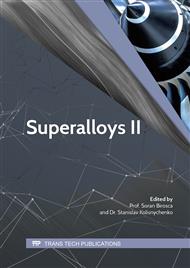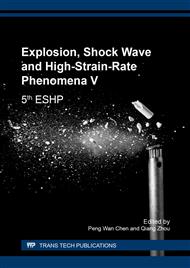p.41
p.46
p.52
p.58
p.67
p.72
p.78
p.84
p.90
Investigation on Microvoid Nucleation of High Temperature Nickel Based Superalloy under Thermal Shock
Abstract:
The metal would overheat and even burn under the thermal shock arisen as laser drilling, which causes micro-damage inside the metal. Cavitation is the most important origin for crack propagation and failure of metal. To understand the damage mechanism in the heat affected zone of the high temperature nickel based superalloy DD6, an experiment of microvoid nucleation was designed and implemented by laser drilling in DD6 sheet. The complex characteristics of micro-damage including microvoid near the perforation were observed by scanning electron microscopy. An analytic solution of the temperature field in DD6 sheet for thermal shock arisen as laser drilling was obtained on the basis of the non-Fourier heat conduction theory. As a result, the minimum of peak temperature during the thermal shock in the zone of microvoid nucleation was estimated, it can be approximately regarded as critical temperature of nucleation.
Info:
Periodical:
Pages:
67-71
Citation:
Online since:
January 2018
Authors:
Price:
Сopyright:
© 2018 Trans Tech Publications Ltd. All Rights Reserved
Share:
Citation:



